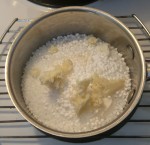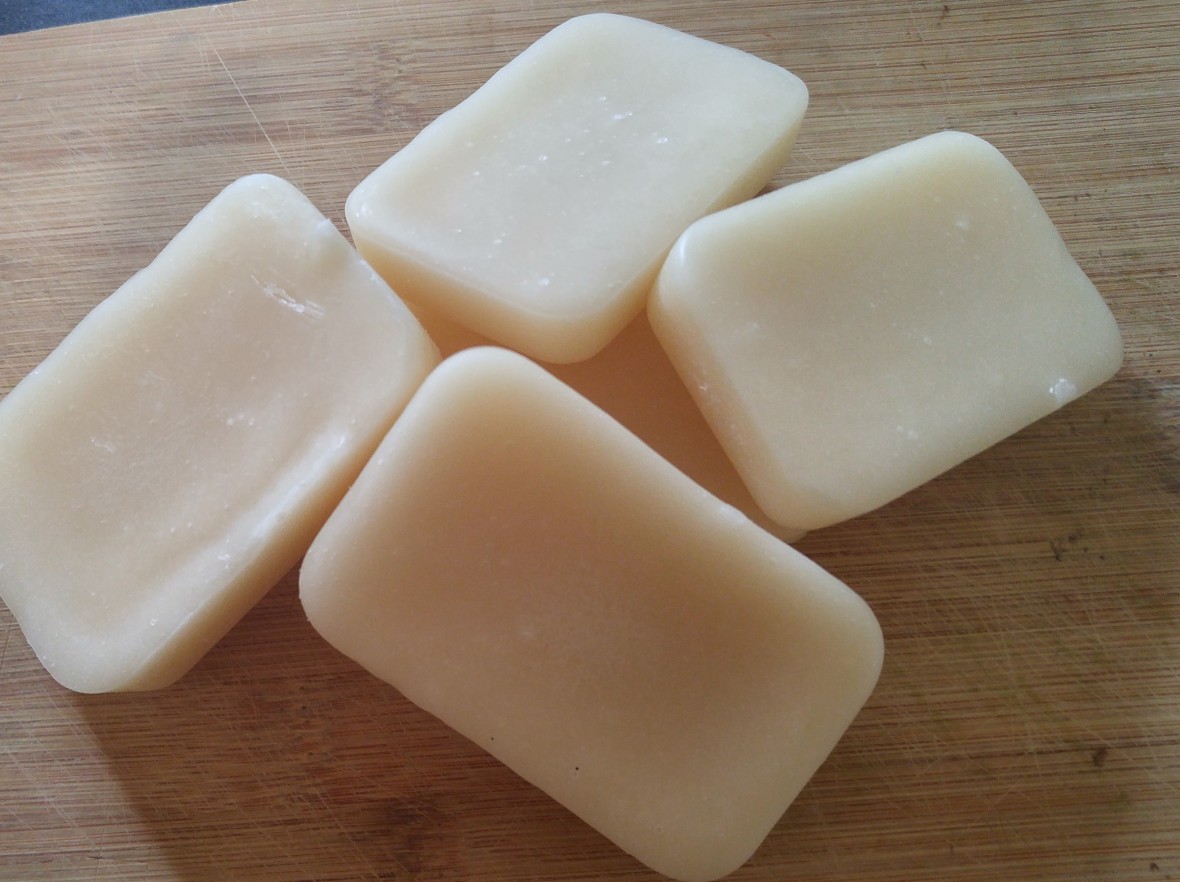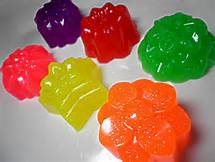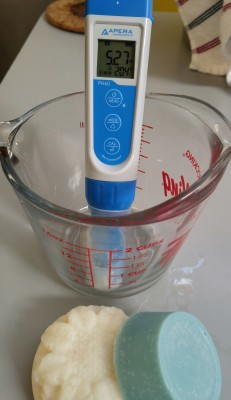Soap 1 Basics – Palm Free (approx. 1lb)
Read through the entire recipe to familiarize yourself with the safety proceedures. We have included both weight measure & volume measures when you do not have a scale s. Once you get the hang of it, use a scale to measure your ingredients. The video shows the steps using a scale.
Cold-Processed (CP) Soap – The goal is to create a mild soap that cleanses and moisturizes without synthetic intrusion! Recipe could be doubled or tripled. For best results insulate the soap immediately after it has been poured a mold.
Here is a video tutorial from Elly’s Everyday: https://www.youtube.com/watch?v=Kc7duzDEa6Y Our forrmula is different and the tutorial is to show the steps for a fabulous handmade soap.
Tools & Equipment you will need for your soap project
- Stainless steel pan 2 liters or so (never alluminium)
- Silicone spatula
- Stick blender or hand held blender
- Goggles
- Face Mask
- Cardboard to cover mold
- Old blanket or towel
- 2 cup plastic cup x 2
- Rubber gloves
- Thermometor, laser or any food
Ingredients
Oils/Fats
1/3 cup and 1/4 cup (4.2 oz/119 g) – melted Coconut Oil
1/2 cup and 1/3 cup (6.6 oz/188 g) – Pomace Olive Oil
3 TBSP (1.2 oz/34 g)– melted Cocoa Butter
Lye Solution
WARNING: Always add the solid form lye (sodium hydroxide ) to the liquid. If the liquid were added to the solid form lye a violent reaction could result. In other words there could be a “volcano” eruption out of the container.
3 TBSP (52 g) – Sodium Hydroxide
1/2 cup and 1 TBSP (4.56 oz/130 g) – cold Water, distilled or filtered
Optional Additives – added at trace
1/2 TSP – Sodium Lactate (optional- added to water before lye for a harder bar)
3 TBSP – Castor Oil
1/2 TSP – Grapefruit Seed Extract or Vitamin E Oil
1 1/2 to 2 TSP (100 to 120 drops) – Fragrance or Essential oils
1 Spritz – Denatured or Isopropyl Alcohol
Directions
- Work in a well-ventilated area. While wearing rubber gloves, a protective respirator and protective eyewear, add the lye to cold water, mix and allow to cool to between 85 F to 110 F. Use a flat plastic tool to mix the lye mixture until the lye crystals are fully dissolved. This should take approx. 1 minute or less. If the lye mixture gets too cold put container in a warm water bath until desired temperature is reached. Remember lye is corrosive. Always be extremely careful when working with it. Never use pyrex or alluminium conainers or tools.
- Warm the Oils/Fats in a pot until melted, and allow to cool to between 85 F to 110 F. When only small bits of cocoa butter and coconut oil remain in the pots, remove from heat as the mixture will melt the remainder of these oils.
- Line the mold with parchment paper and grease the sides with any vegetable oil (castor oil used in class) and have them ready.
- Choose the essential oils and place aside.
- Pour the lye solution into the oils/fats and mix with a stick blender. Watch this step and ensure no soap mixture splatters out of the container. Make sure to scrape the sides with a spatula to ensure no mixture is left on the edges.
- Continue blending until a small amount of soap drizzled across the soap’s surface leaves a faint pattern (called tracing) before sinking back into the mass. Now the soap is ready for the additives. Add the optional additives at this point. Add the essential oils last, as they can harden the soap quicker. So be careful to have the molds ready and waiting.
- When the essential oils are added stir with a spatula for twenty to thirty more seconds or for as little time as needed to fully incorporate the essential oils. Pure essential oils are usually cooperative, whereas some synthetic fragrance oils are more likely to streak and seize the soap.
- There are two methods from here:
- The first method is to cover the soap to incubate it and allow to “gel” for 4-6 hours. The soap should feel firm like hard cheese before removing. We recommend that you remove it after 4-6 hours or you risk that it will crumble when cutting. After the soap can be removed from the mold by running a bread knife around all sides and pulling the mold away from the soap. Turn the mold upside down to remove the soap. If it does not come out of the mold, place the soap in the freezer for 2 hours and try to remove it again. Then, after is has been at room temperature for an hour, cut the soap.
- The second method is placing the soap in the freezer immediately after it has been poured. This bypasses the gel stage. Freeze it for 8-12 hours and remove it from the mold, cut after 1 hour or so. The advantage to this method is there is no gel discoloration and the soap feels creamier. The disadvantage is the scent seems to diminish more than the first method.
- Wait 4-6 weeks to use the soap, or check the PH of the soap periodically during this time. A PH range of 8-10 is ideal.
NOTES:
- Always ensure to MEASURE EXACT PROPORTIONS when making soap.
- Never use aluminium pots, utensils or bowls, as the lye will react with this metal. Use stainless steel or vision pots; plastic, glass or stainless steel bowls; plastic utensils.
- Expiration: 6-8 months without antioxidant or 8-16 months with antioxidant
Ingredient Properties:
Coconut oil is obtained from copra, which is dried coconut meat. A percentage of coconut oil in cosmetics is moisturizing. Too much of it can be drying. Its saturated nature resists rancidity and makes a very hard soap, yet its low molecular weight allows for high solubility and a quick, fluffy lather, even in cold seawater. Even companies manufacturing tallow soaps use about 20% coconut oil for its lathering and moisturizing properties.
Pomace Olive oil has a history of healing, and the prevention of fatigue, hypertension and rheumatism. It is a very good moisturizer, not because of its own healing properties, but because it attracts external moisture, holds the moisture close to the skin, and forms a breathable film to prevent loss of internal moisture. It is rich in oleic and linoleic acid and arachidin and palmitin-two important polyunsaturated fatty acids. Extra-virgin olive oil is the most desirable grade for the gourmet chef, but grades A and B are best suited for soap making. Olive oil can be difficult to saponify, however mixed with other oils it works well. Pomace olive oil provides the quickest saponification, though it produces a darker soap.
Cocoa Butter is extracted from the Cacao Bean and carries a rich pleasant chocolate aroma. Cocoa Butter-Natural Wafers have high oxidative stability as a result of being naturally rich in antioxidants. Cocoa butter is solid at room temperatures, but melts easily on contact with the skin. Prevents drying of the skin and development of wrinkles. Reduces degeneration of skin cells and restores skin flexibility. Produces a hard, moisturizing bar of soap.
Lye has two meanings: It is the solid form of a caustic alkali, and it is also the water solution in which a caustic alkali has been dissolved. To avoid confusion and distinguish between the two, refer to the chemical, sodium hydroxide, as “sodium hydroxide or caustic soda” and the sodium hydroxide/water solution, as “lye.” The lye solution is a slippery, strongly alkaline substance. It is this base that reacts with fats and oils to make soap. It is corrosive, so avoid getting any pure lye or uncured soap on the skin.
Sodium Lactate is used to help harden soap. It is a great additive to use in soap with a high content of olive oil- like this one- as olive oil, while incredibly rich and moisturizing, is quite soft and will dissolve more quickly when used.
Castor Oil is traditionally used in rich emollient bar soaps. This oil has even been used in salves and body balms or liquid lip products. Often used in making transparent soaps too! In combination with other oils and as a super fatting agent, castor oil lends emollience to soap formulations. It, however, should be used at a low percentage to keep the soap from becoming too soft.
Grapefruit Seed Extract or Vitamin E Oil are antioxidants added to the soap to prolong the shelf life of your bar.
Distilled water or filtered water is recommended for use in soap making because pure, soft water contribute to pure soap. Contaminated water affects the integrity of the soap. Hard water contains dissolved mineral salts that react with the sodium hydroxide ions in the lye solution, leaving fewer of these ions to make soap during the saponification process.
Denatured or Isopropyl Alcohol is spritzed on the top of the soap to prevent a layer of soda ash from forming. Soda ash will wash off within the first use, all it does is effect the aesthetics.
What is soap?
Chemically, an acid (the fats and oils) and a base (a solution of sodium hydroxide and water, also called lye) react to produce soap and glycerine. The process is called saponification, and as the fats and oils and the lye solution come into contact with one another and react, they are saponifying, or making soap
This is the cold-process (CP) method – once the sodium hydroxide solution is added to the melted fats and oils, no external heat is required to keep the soap making reaction going.
The heat of the ingredients is plenty to drive the reaction to completion. “Cold” does not mean cold; it was coined as a relative term, comparing it to the more common hot soap making temperatures produced when heat is applied – the hot-process (HP) method. Susan Miller Cavitch, Author of the Natural Soap Book, 1997. Ordinary soap is solely made up of fats and an alkali. In the past, people made their own soap from animal fats and wood ashes. Today there is very little true soap in the traditional sense on the market. You might recognize these soaps as products marketed with characteristics such as “pure”. “True” soaps are regulated by the Consumer Product Safety Commission, not FDA, and do not require ingredient labeling. Most body cleansers on the market today are actually synthetic detergent products and come under the jurisdiction of FDA.
These detergent cleansers are popular because they make suds easily in water and don’t form gummy deposits. Some of these detergent products are actually marketed as “soap” but are not true soap in the common and legal definition of the word. If a cosmetic claim is made on the label of a “true” soap or cleanser, such as moisturizing or deodorizing, the product must meet all FDA requirements for a cosmetic, and the label must list all ingredients. If a drug claim is made on a cleanser or soap, such as antibacterial, antiperspirant, or anti acne, the product is a drug, and the label must list all active ingredients, as is required for all drug products.
What are the main differences between commercial and handcrafted soap?
By handcrafting soap, all of the naturally occurring glycerin is retained to add moisture to your skin. Many commercial manufacturers remove valuable glycerin to be sold separately. Today’s commercial cleansing products are full of synthetic detergents, petrochemicals, and artificial preservatives that clog your pores and create dry skin. Also, although everyone still calls them soap, most commercial cleansing products are not soap at all and are actually detergent! If you think about it, you will notice that the word “soap” has quietly disappeared from your favorite bar’s packaging and advertisements sometime over last 20 years. This is because advertising law prevents them from still calling it soap when it is a detergent. They are now labeled “beauty bars”, “deodorant bars”, and “family cleansing bars”, anything but the word “soap”. Commercial bars are often filled with harsh additives, fillers, and chemicals that irritate the skin and cause allergic reactions. Handcrafted soaps rarely contain these.
What is super fatting in soap making? There are a few ways to calculate superfat. The easiest method is to plug your recipe into the http://www.soapcalc.net
All you have to do is select the percentage you want and it will calculate for you.
You can also use the following equation: (1 – % superfat you want). So, if you want to superfat your olive oil soap in the above example by 4%, it would be: (1.34 oz. lye) x (1 – .04) = 1.29 oz. lye.
You can also simplify that – for a one pound batch of soap, a 5% superfat works out roughly to 0.8 oz. of extra oils per pound of soap. We almost always superfat our recipes at 5% because it adds luxury to the soap without making it too soft or inhibiting lather. Superfat is a totally personal thing. Some soap makers go up to 15% and swear by it. It also depends on the recipe. For instance, we recommend superfatting 100% coconut oil soap at 20% so it isn’t too harsh on the skin. Experimenting with a few different superfats is the best way to find the amount you love. It used to be adding some extra fat at trace would be a superfat. This is only the case with hot processed soap whereby the soap is totally cooked and additional fat at that point is superfatting your recipe.
Making Your Own Mold using sign material: Take the measurements of the box: ie LxWxHx0.4 will provide the total amount of oils required to make a recipe fit the mold size. (Keeping in mind that the “height” doesn’t have to come up to the top of the box, pour a smaller amount if desired) and then enter the recipe into a soap calculator and resize as required.
403-217-2346 www.soapandmore.com
Scent Blends To Try At Home for CP Soap – 1 lb
100 drops – Lemongrass
25 drops – Geranium
15 drops – Lemon
Fresh and clean, with a little extra.
100 drops – Orange 5X
25 drops – Ginger
15 drops – Cinnamon Leaf
Sweet and spicy.
50 drops – Lavender
25 drops – Spearmint
50 drops – Rosewood
Fresh and slightly foresty- it never gets old!
50 drops – Ylang-Ylang
100 drops – Orange (sweet or 5X)
Citrus with a floral twist.
60 drops – Lavender
40 drops – Lime
20 drops – Peppermint
Herbal heaven!
125 drops – White Grapefruit
25 drops – Cedarwood
Great unisex scent.
50 drops – Rose Geranium
50 drops – Lavender
25 drops – Ylang-Ylang
Just like a fresh bouquet!
75 drops – Scotch Pine
30 drops – Peppermint
30 drops – Eucalyptus
Verdant and herbal!




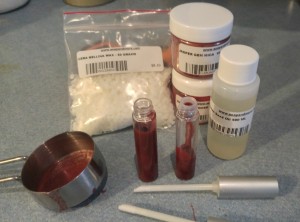
 Makes 2 x 50 gram bars
Makes 2 x 50 gram bars